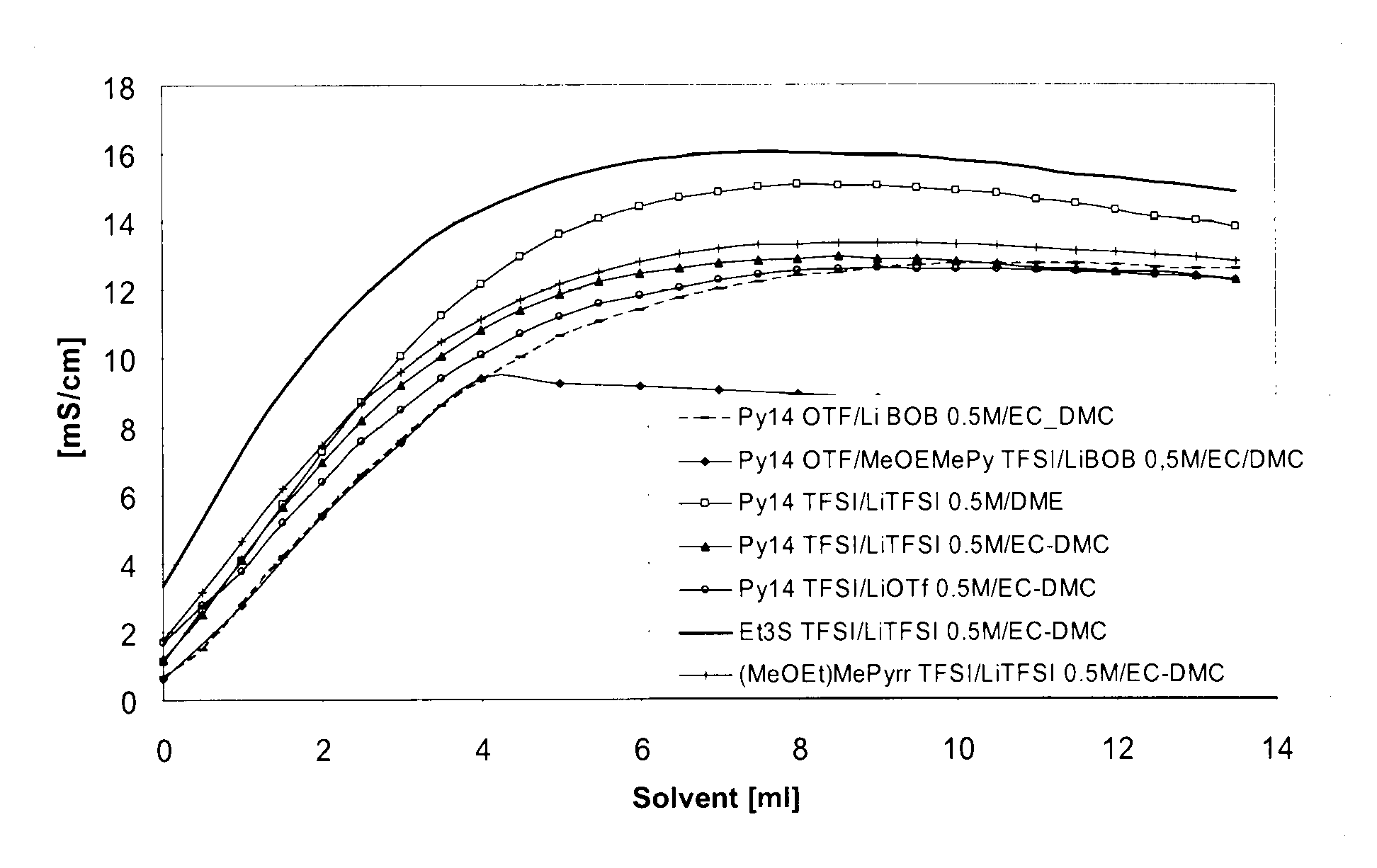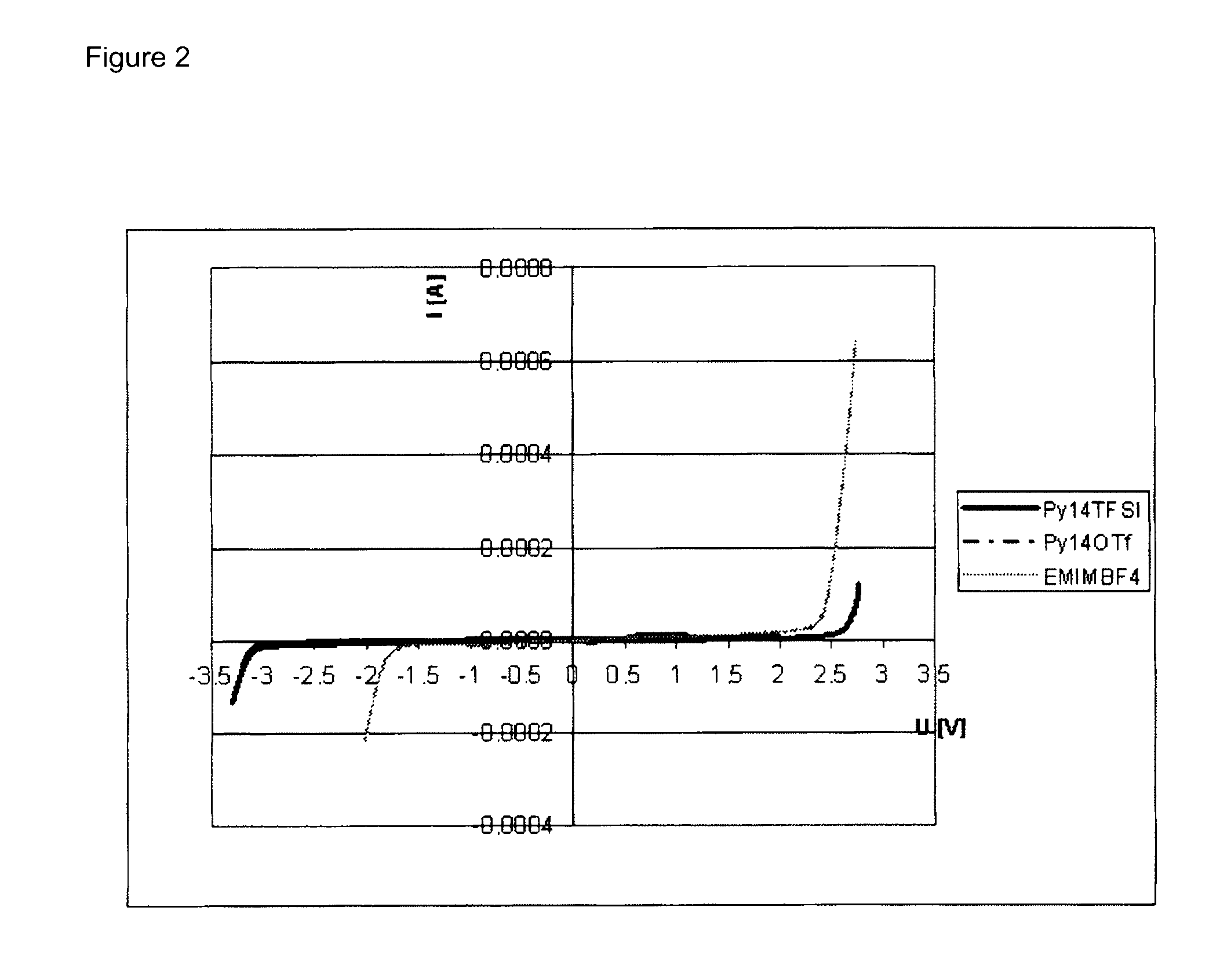Electrolyte formulations for energy storage devices based on ionic liquids
a technology of electrolyte formulation and energy storage device, which is applied in the direction of primary cells, electrochemical generators, non-aqueous electrolyte cells, etc., can solve the problems of battery destruction, equipment destruction, and most unfavorable cases
- Summary
- Abstract
- Description
- Claims
- Application Information
AI Technical Summary
Benefits of technology
Problems solved by technology
Method used
Image
Examples
Embodiment Construction
[0008]The stated object is achieved by an electrolyte formulation comprising a) an ionic liquid which is electrochemically stable over a range of at least 4.5 V, preferably 4.8 V, more preferably 4.9 V, even more preferably 5.0 V and most preferably 5.4 V, has a viscosity of <300 mPa·s, preferably <250 mPa·s, more preferably <200 mPa·s, even more preferably <150 mPa·s, at 20° C. and has a conductivity of at least 1 mS / cm, preferably at least 2 mS / cm, more preferably at least 3 mS / cm, at 20° C., and b) an aprotic, dipolar solvent in an amount of 20 to 60% by volume, preferably 25-55% by volume, more preferably 30-50% by volume, based on the electrolyte formulation, wherein the conductivity of the electrolyte formulation is greater at least by a factor of 2, preferably at least by a factor of 3, more preferably at least by a factor of 4, than the conductivity of the ionic liquid.
[0009]In the context of the present invention, the viscosity values are determined using a rheometer (RS 60...
PUM
| Property | Measurement | Unit |
|---|---|---|
| conductivity | aaaaa | aaaaa |
| melting point | aaaaa | aaaaa |
| conductivity | aaaaa | aaaaa |
Abstract
Description
Claims
Application Information
 Login to View More
Login to View More - R&D
- Intellectual Property
- Life Sciences
- Materials
- Tech Scout
- Unparalleled Data Quality
- Higher Quality Content
- 60% Fewer Hallucinations
Browse by: Latest US Patents, China's latest patents, Technical Efficacy Thesaurus, Application Domain, Technology Topic, Popular Technical Reports.
© 2025 PatSnap. All rights reserved.Legal|Privacy policy|Modern Slavery Act Transparency Statement|Sitemap|About US| Contact US: help@patsnap.com



